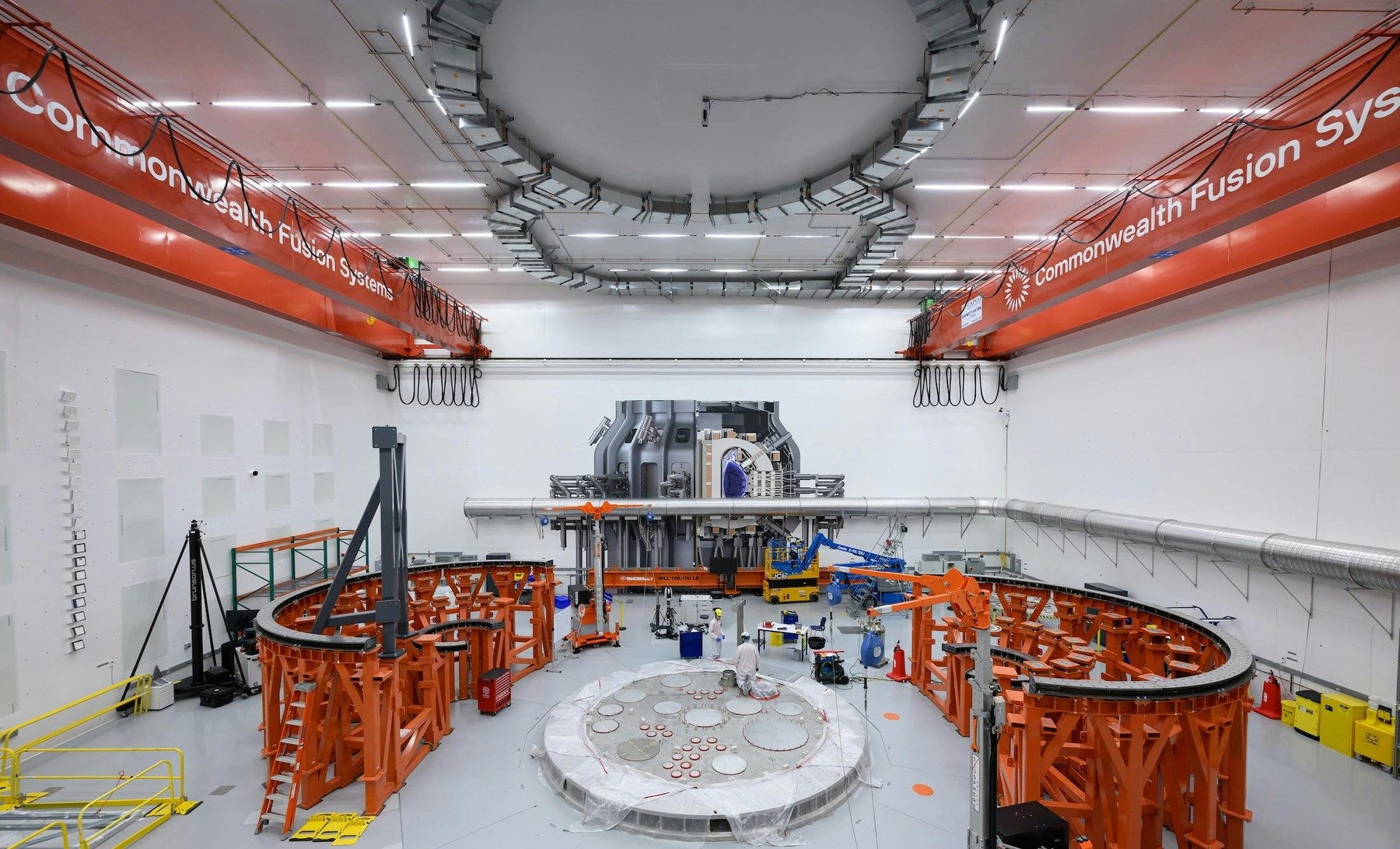Throughout the deepest depths of the universe, across its black holes and alien worlds, there is no element as abundant as hydrogen. Born from the scalding soup that was the early universe, the element now makes up about 90% of all atoms in existence, powering everything from the hearts of stars to human bodies to Earthly industries.
On our planet, though, hydrogen is elusive; extracting it is a finicky procedure that releases billows of carbon dioxide (CO2) into the atmosphere. Now, a growing swathe of companies is turning its attention to green hydrogen, produced entirely with renewable energy. It’s often lauded as a ‘Swiss army knife’ of climate tech with countless potential applications and a miraculous remedy to climate change. But beyond the hype, could it be too good to be true?
Green Hydrogen Technology: A Brief Overview
In 2022, hydrogen production and use pumped out 900 million tons of the toxic gas, according to the International Energy Agency (IEA); were it a country, hydrogen would’ve been that year’s sixth greatest polluter. Green hydrogen companies currently make up less than 1% of the stuff produced worldwide; the rest is produced by a rainbow of other methods. There’s brown and black hydrogen, which is produced using coal. Grey hydrogen uses natural gas for extraction. Blue hydrogen uses the same process as grey, but captures most of the CO2 to store it underground.
But for the future, companies and governments are betting on green hydrogen. It’s produced with a process called electrolysis, wherein an electric current is run through water, splitting it into oxygen and hydrogen. For it to qualify as green hydrogen, the electricity must come from renewable sources.

Electrolysis Methods for Green Hydrogen Production
The machines used for the process, called electrolyzers, can look slightly different depending on the method used. One of the more popular ones is PEM or Proton Exchange Membrane. These electrolyzers consist of a pair of electrodes, or conductors that can bring electric currents into non-metallic parts of a circuit (like water). The anode (positive side) and cathode (negative) are separated by a membrane that allows protons to cross while preventing the hydrogen and oxygen from mixing again. The water is relieved of its electrons (or is oxidized) at the anode side, resulting in oxygen gas, protons, and electrons. The oxygen gas is released while the protons cross over the membrane, attracted by the cathode side; the electrons are also sent to the cathode side via an external route. Once there, the electrons and protons link up to form hydrogen.
Another often-seen method is alkaline electrolysis. Like PEM, the technique involves an anode and a cathode, but here, they’re swimming in an alkaline soup that serves as an electrolyte: a medium through which ions (charged particles) can move. There’s also a porous diaphragm or membrane in the center. When water is added and the current is applied, the water at the cathode reduces into hydrogen and hydroxide, thanks to an external supply of electrons. The hydroxide, which has a negative charge, travels across the membrane towards the anode where it is oxidized, becoming oxygen gas and electrons (which are pumped back towards the anode).
A slightly less popular method is solid oxide hydrogen electrolysis. To kick things off, water vapor is pumped into the cathode side, where it combines with electrons from an external cycle to make hydrogen gas and oxygen ions (negatively charged). The hydrogen gas is siphoned off, while the oxygen ions travel through a solid electrolyte towards the anode; here, their electrons are pumped back through the external cycle, leaving only oxygen gas.
The Growing Landscape of Green Hydrogen Companies and Producers
Hydrogen is already an industrial giant, fueling the production of ammonia, refining petroleum, and powering some electric vehicles, but its green variant is now often touted as the savior of the planet. Green hydrogen could decarbonize steel or industrial production, fuel larger vehicles (as reported by NYT), or heat homes without emitting fossil fuels. The most optimistic of estimates foresee it replacing oil and gas altogether and becoming an industry worth trillions.
The potential isn’t going unnoticed; it’s being boosted by a slew of governmental or institutional incentives and regulatory frameworks, public pressure for the decarbonization of industry, geopolitical concerns about energy security, and the need for fossil fuel-specialized companies or companies to diversify their business (as described by Legal Business).
As a result, planned green hydrogen projects are growing at a rapid pace, according to the IEA; its 2023 Global Hydrogen Review states that if all announced low-emission hydrogen projects come to fruition, they could potentially produce an annual 38 million tons of the stuff by 2030 – 50% more than what was predicted in the preview year’s review. Green hydrogen (as opposed to blue) would account for 27 Mt of that. Still, the report notes that 58% of planned electrolyzer by 2030 capacity stems from projects still in the earliest stages of development; since extracting the stuff requires mountains of money and long development timelines, most of the larger-scale projects come courtesy of oil companies.
Green Hydrogen Companies and Producers by Regions
Companies in Asia
Since green hydrogen constitutes only a tiny fraction of the stuff produced today, many top companies’ plans have yet to take shape. In terms of current production, the clear leader is China – unsurprising given its affinity for other climate tech including renewable energy and electric vehicles. By the end of 2023, the IEA estimated China accounted for 50% of the world’s electrolyzer capacity, which can be up to 75% cheaper than Western alternatives (according to BloombergNEF, reported by Recharge).
- In China, some of the heftiest plants are led by oil giants. One of them, Sinopec’s 260 MW Kuqa plant, began operations in 2023 (though it’s only working at 20% capacity as of January 2024).
- State-owned PetroChina already operates a 30MW green hydrogen plant and has plans for several more, including a 3GW plant in Inner Mongolia.
- Solar giant LONGi’s subsidiary for hydrogen, already planned to have 2.5 GW in manufacturing capacity by the end of 2024, recently unveiled a new alkaline electrolyzer design that would be one of the most efficient in the world (as reported by Hydrogen Insight).
- In India, US-based green hydrogen company Ohmium recently opened its first 2GW plant.
Companies in the Middle East
In a region long dependent on its rich reservoirs of oil, green hydrogen might represent a way out from under its yoke. Many of the region’s countries have laid out plans to diversify economies, with renewable energy often playing a key role. Hydrogen is no exception; in 2023, its countries had 83 ‘low carbon or renewable hydrogen/ammonia’ projects planned, more than doubling its 2022 numbers, according to S&P (though many of these are blue hydrogen).
- The most significant green hydrogen project is Saudi Arabia’s NEOM and its $8.4 billion plant, which will become the biggest in the world once it begins operations in 2026.
- The UAE’s state-owned ADNOC has also made moves in that direction, including the purchase of Fertiglobe, a company specialized in ammonia produced from blue or green hydrogen.
- Egypt, another country investing heavily in green or clean hydrogen, announced $40 billion worth of deals for exploring the tech in early 2024; it’s also working with UAE-based green energy company AMEA to build a 1GW plant.
Companies in the USA and Europe
- Though American fuel cell company Plug Power has been bleeding money, it managed to inaugurate the US’s biggest PEM project in early 2024: a 40MW plant in Georgia. It’s also planning three facilities in Finland (2.2GW together once operational), a 3GW plant in Australia, and up to six new PEM plants in the US (for which it received a $1.66 billion loan from the US Department of Energy).
- Texas-based Green Hydrogen International, says it’s planning three megaprojects in Texas, Nova Scotia, and Quebec; however, there’s very little public information on the company and the details or viability of its plans.
- All the Western fossil fuel giants have at least one hydrogen initiative (though some are focused on the blue, rather than green). The US’s second-largest oil giant, Chevron, is planning its first 5MW green hydrogen plant in California.
- Across the ocean, the UK’s Shell recently announced a 100MW electrolyzer in Germany. Its local peer BP plans to build five to ten low-emission hydrogen projects within the decade; these might include already announced projects in Spain, Germany, and the UK. It also recently bought a 49% stake in a green hydrogen project in Oman.
- Europe, meanwhile, has 254 green hydrogen projects in the pipeline, according to the European Commission; its heftiest hubs include Norway (whose Yara recently opened Europe’s largest green hydrogen facility), the Netherlands, and Germany.
Governmental Incentives or Subsidies for Green Hydrogen Companies
Green hydrogen isn’t exactly cheap; it currently costs €3-8/kg, compared to grey hydrogen’s €1-2/kg. Governmental subsidies or tax breaks could help, encouraging customers to buy the stuff while companies figure out how to bring the price down. According to the IEA, 41 governments have developed hydrogen strategies; one of the most monumental is the US’s 2022 Inflation Reduction Act (IRA), which grants up to $3 in tax credits for every kilogram of green hydrogen produced. The same year, the European Commission announced the European Hydrogen Bank (EHB), which recently revealed the winners of its first ‘auction’ for green hydrogen subsidies. The companies, however, only bid for and received subsidies ranging from €0.37 to €0.48/kg. Also, governments often pay for projects directly; half of Saudi Arabia’s $8.4 billion NEOM, for example, is funded by the Saudi government, and Shell (illegally) received a $162 million subsidy from the European Commission for one of its green hydrogen projects (after raking in $40 billion in profits that year). In China, where state investment boosted its electric vehicle and solar panel dominance, subsidies for green hydrogen haven’t reached that level yet, though occasional investments still occur; for example, China’s state-owned electricity giant SPIC invested $5.85 billion into developing green hydrogen-based aviation fuel.
Challenges and Opportunities for Green Hydrogen Companies
Green hydrogen, like other novel tech, is plagued by the devilish combination of having long, expensive developmental timelines and no guarantee of success, all while being surrounded by a cloud of hype. Time and time again, these circumstances have brought the most promising of industries to their knees; cleantech, for example, suffered this fate a little over a decade ago. And despite green hydrogen’s opportunities – like decarbonizing entire industries and curbing climate change – the fact remains that its hurdles are vast. Its significantly higher costs, for one, are already providing an excuse for some of the biggest oil companies – US’s ExxonMobil and Saudi Arabia’s Aramco – to declare green hydrogen futile as a replacement for its products (as reported by Hydrogen Insight).
Also, green hydrogen is significantly trickier to integrate on a large scale than, say, renewable energy. Even though there are plans to use it for almost anything under the sun – industry, energy, propulsion, heaters – there are significant gaps in infrastructure, logistics, and costs. As a result, ambitious plans to revamp entire markets with it – like Europe’s – are likely to miss targets, risking a bursting of the hype bubble. In fact, this might already be beginning; once-rosy projects now sport bloated costs and breeze by deadlines, while subsidies are hardly making a dent into the trillions of dollars needed to meet net-zero targets (as reported by Financial Times).
Read also: Top 5 Renewable Energy Startups in 2025
Why Are Companies Investing in Green Hydrogen?
For heavy polluters like big oil and gas, who frequently face public backlash over their carbon footprint, green hydrogen represents a perfect opportunity. Thanks to the hype surrounding the industry, their efforts attract plenty of interest and take the spotlight off their oil and gas drilling; it’s also a far more suitable climate investment for fossil fuelers than, for example, solar, since it’ll take decades to have a real impact and won’t mess with their core business. And since these massive companies already have much of the scientific know-how, infrastructure, and steady cash infusions needed to handle the long and tricky development timeline of green hydrogen, their involvement in it is somewhat of a no-brainer – even though the untested technology’s success is by no means a guarantee. If green hydrogen does hit its stride, these companies will be ahead of the game and can decarbonize some of their industrial processes. But that isn’t really the point, at least not for now. While big oil’s investments in green hydrogen are worth billions, it’s a cheaper way to present a green image than ceasing their real nest eggs of oil and gas (an industry worth trillions, whose operations account for 42% of global emissions) – and rake in some subsidies while they’re at it.
How Can You Invest in Green Hydrogen?
There are a few ways to invest in green hydrogen. You might want to go to the companies producing the stuff directly; startups, like unicorn Electric Hydrogen, might not be publicly traded, but more established companies like Plug Power often are. You could also go the indirect route and invest in companies developing hydrogen-related products, like fuel cell manufacturers; if you don’t mind investing in oil and gas too, you might also consider buying stocks from the likes of Shell. Another possibility is investing in a green hydrogen-focused ETF, or exchange-traded fund, where you invest in a bundle of companies at once, avoiding the risks that come with putting all your money into just one.
The Future of Green Hydrogen Production
Once considered a golden industry carrying humanity’s hopes for the future, the razzmatazz around green hydrogen shows signs of cracking. Expenses are booming, development is lagging, subsidies aren’t nearly high enough, and forecasts for the demand of green hydrogen companies don’t look so hot. The projected use of hydrogen by 2050 laid out in the 2024 BloombergNEF Energy Outlook report is 25% lower than in the report from the previous year (as reported by Semafor). Electrolyzer manufacturers’ stocks are down as much as 95% from 2021. And for the billions in expenses and headaches in development, green hydrogen might eliminate only 7% of the biggest polluters’ emissions.
As a result, pessimism surrounding the industry is afoot. ‘Expectations have raced far ahead of reality’, writes Michael Liebreich, founder of BloombergNEF, also predicting that by 2030, ‘fewer than one in ten of the projects currently in Bloomberg’s database will have been built.’ The difficulties of green hydrogen are further exacerbated by the might of fossil fuels; ‘we’re competing against 100 years of global subsidy, war, blood, fortune and gold that’s gone into making oil and gas what it is today,’ Electric Hydrogen’s CEO Raffi Garabedian told Forbes in April 2024.
At first blush, the scenario seems eerily similar to some of what preluded the cleantech crash around the 2010s: overenthusiasm, but no robust plans or ways to scale. Still, with so many planned projects and new technologies still in the blueprints, it’s hard to say whether green hydrogen’s prospects bode any better. But, as Liebreich told Foreign Policy in 2023, while green hydrogen might have a part to play in net zero, it’s not the silver bullet to climate change it’s often made out to be. ‘That’s why hydrogen’s the Swiss army knife’, he says, ‘because almost always there’s something cheaper, safer, and more convenient than hydrogen.’








